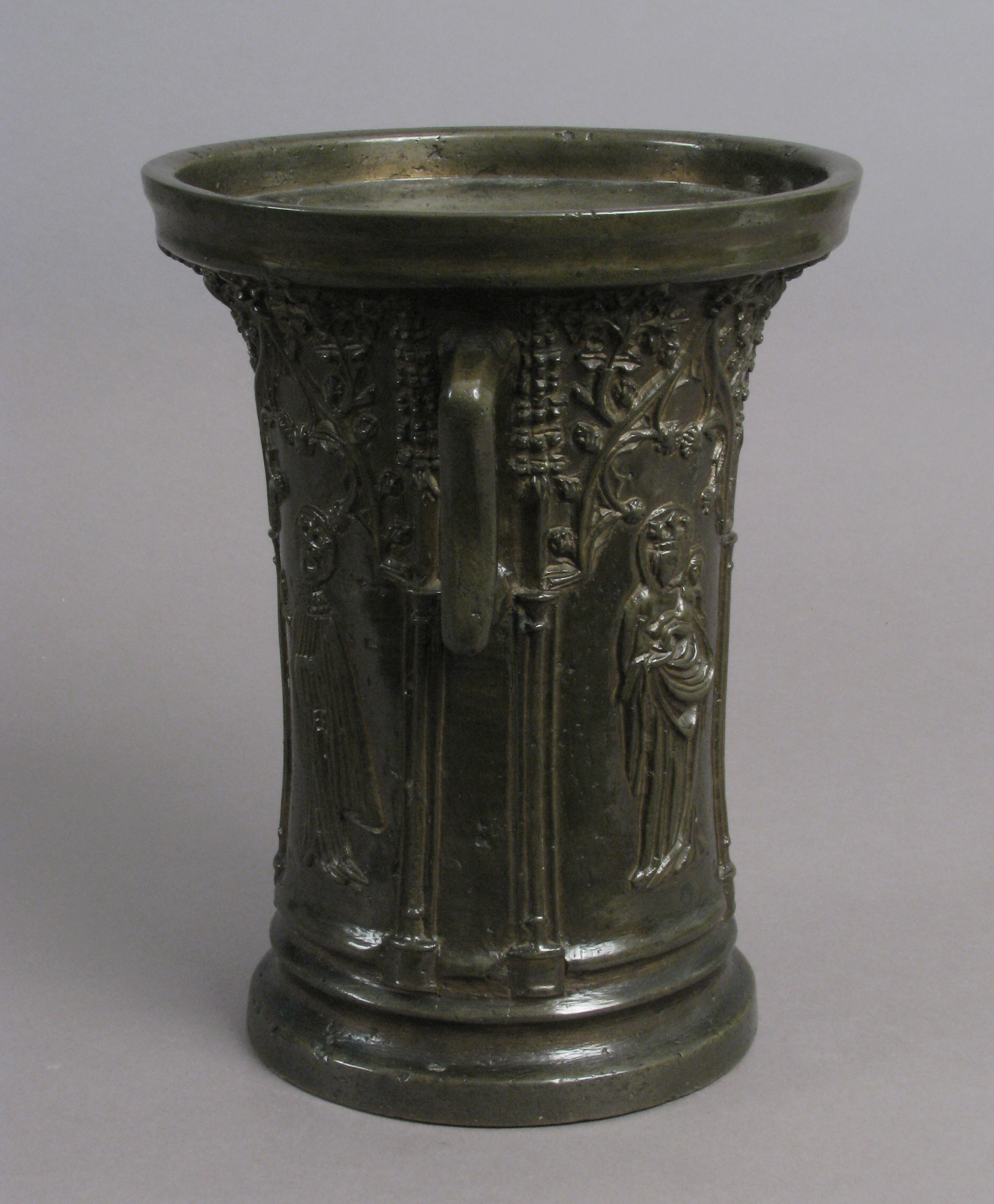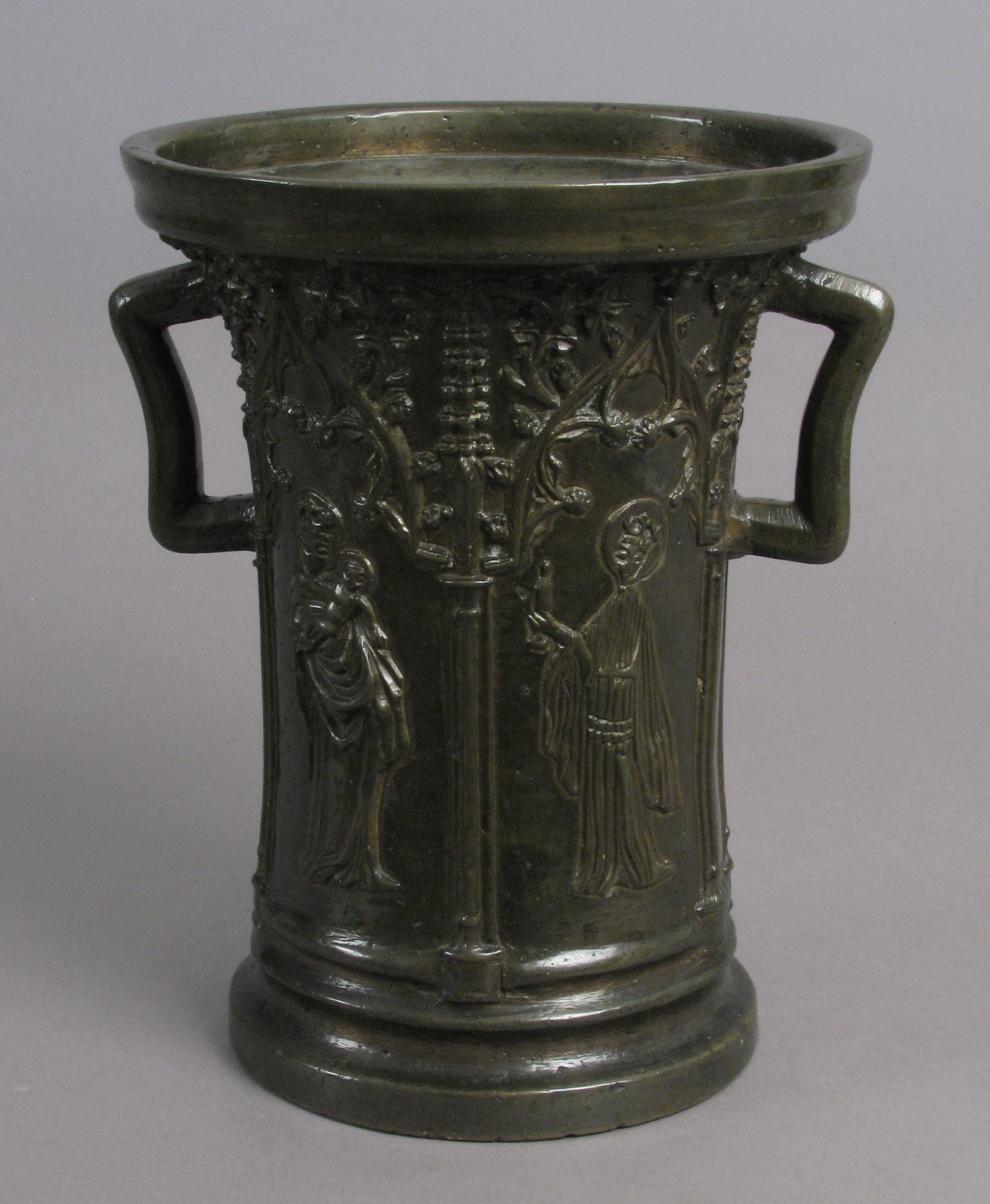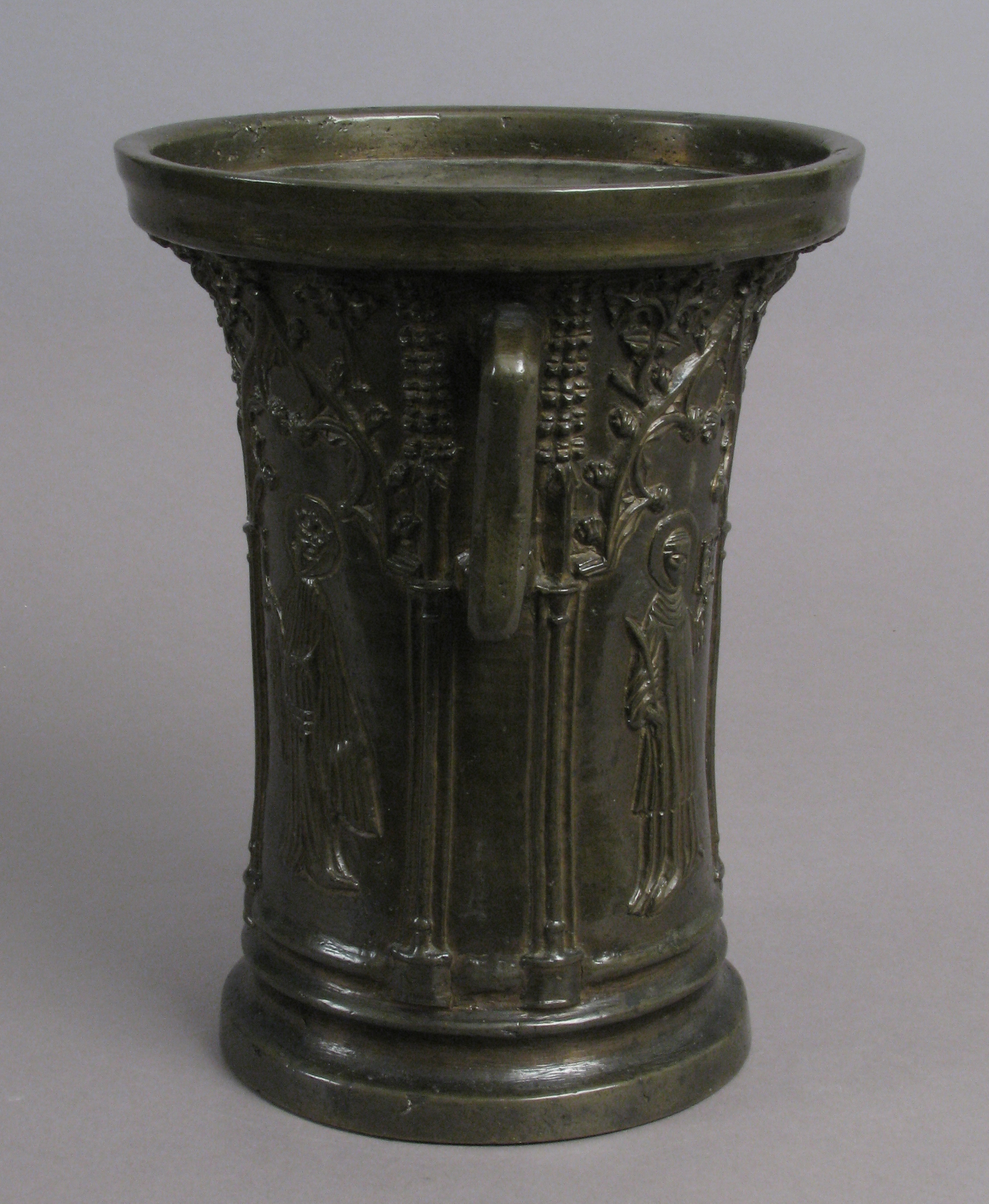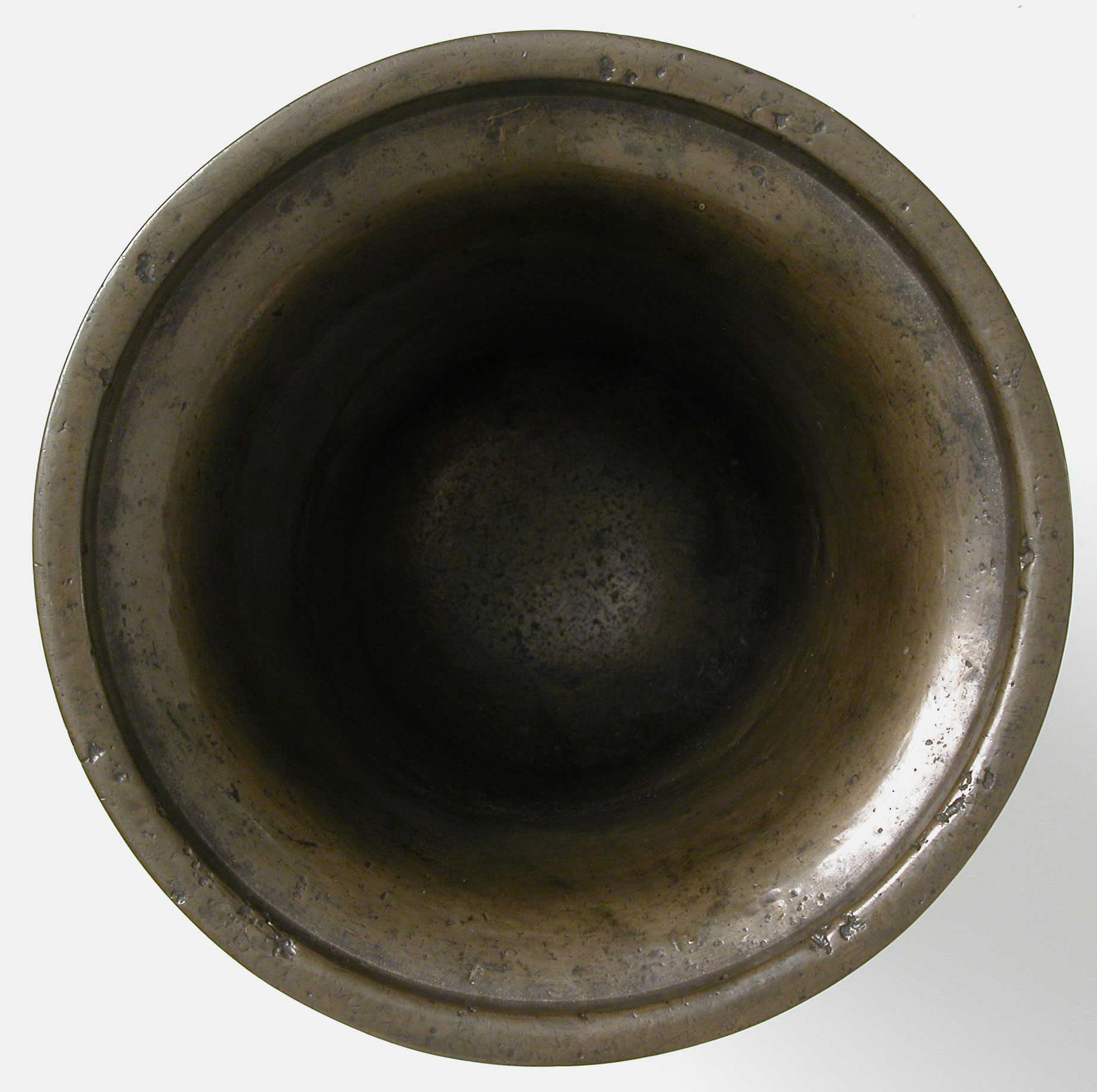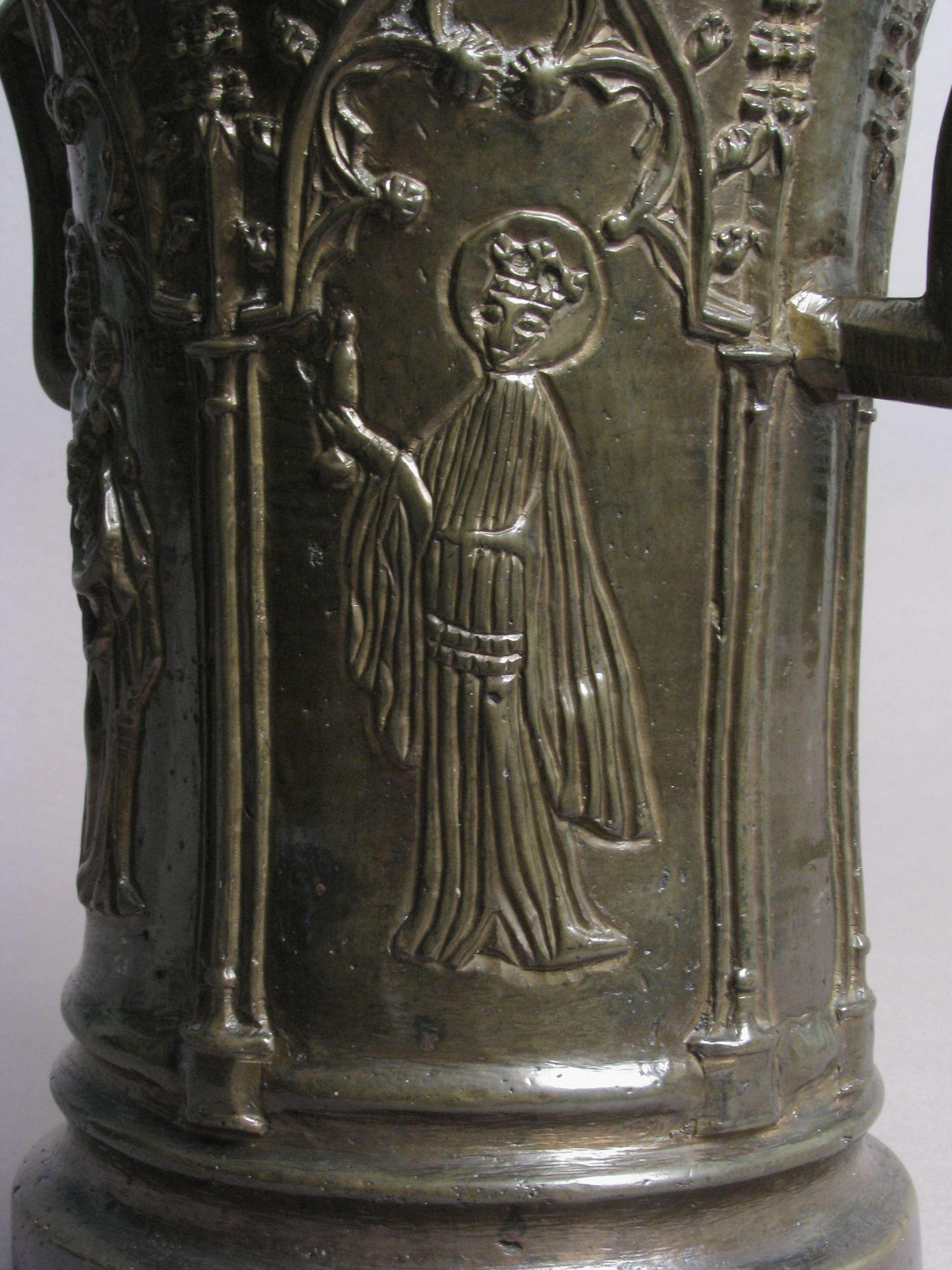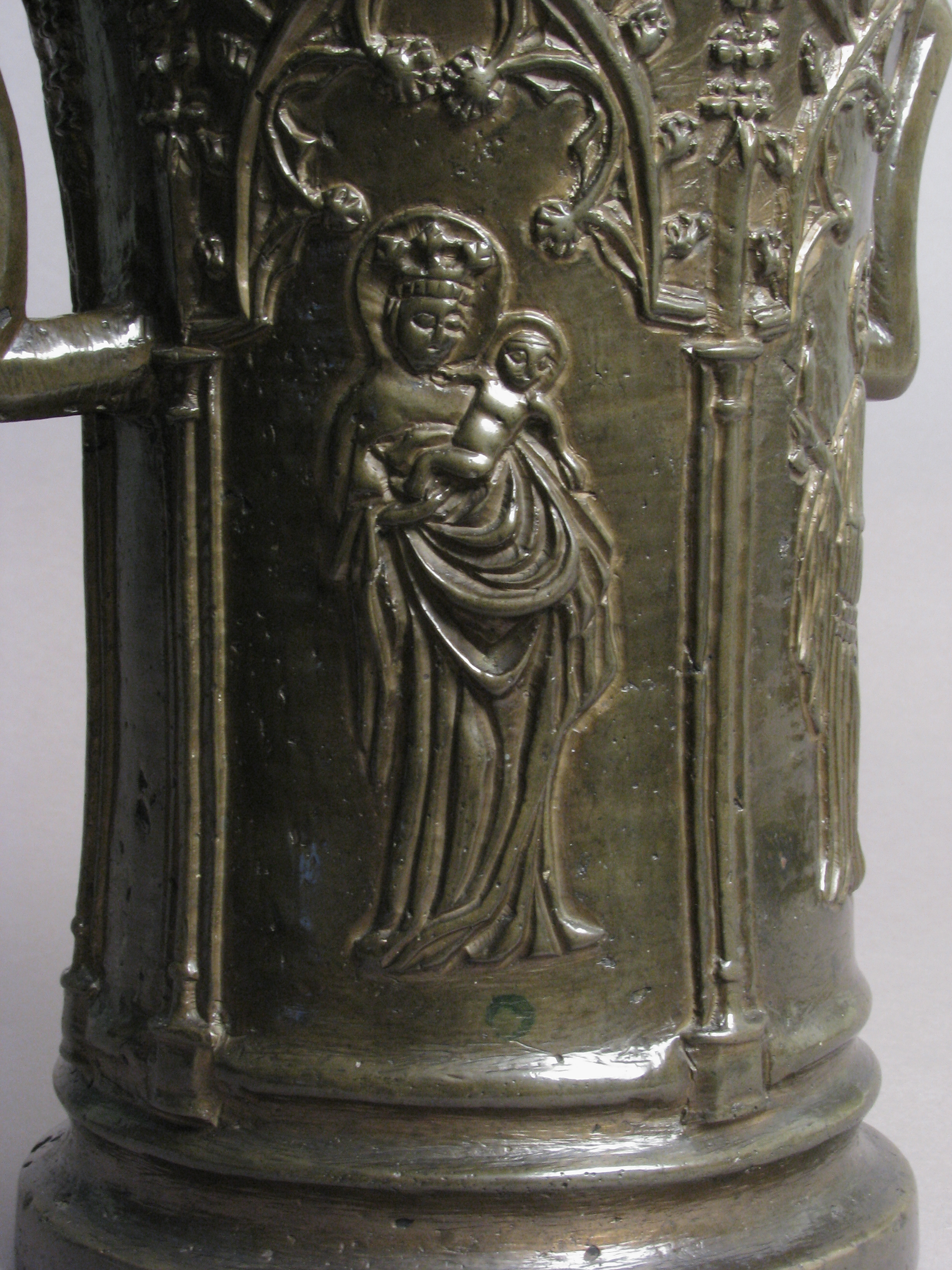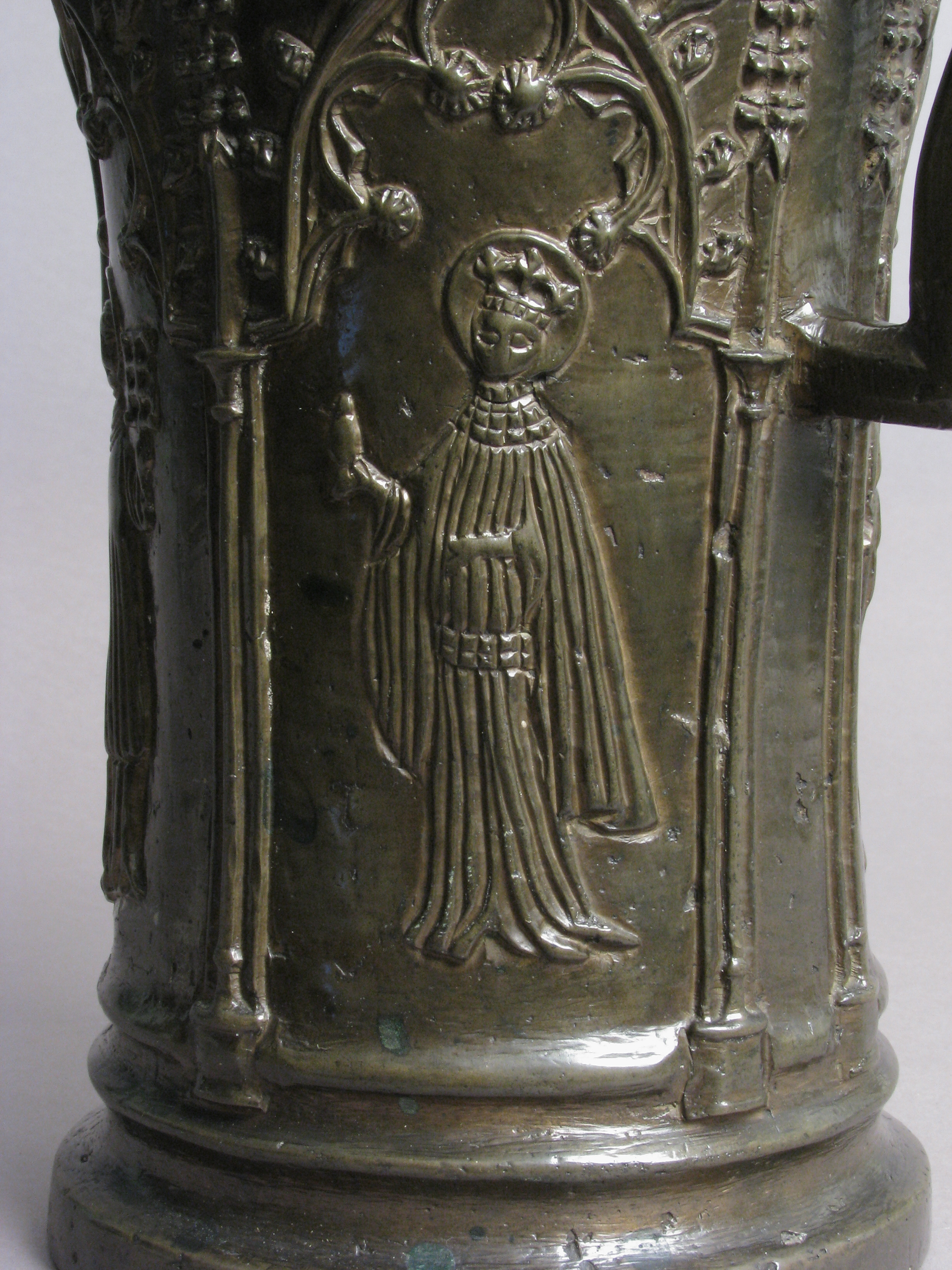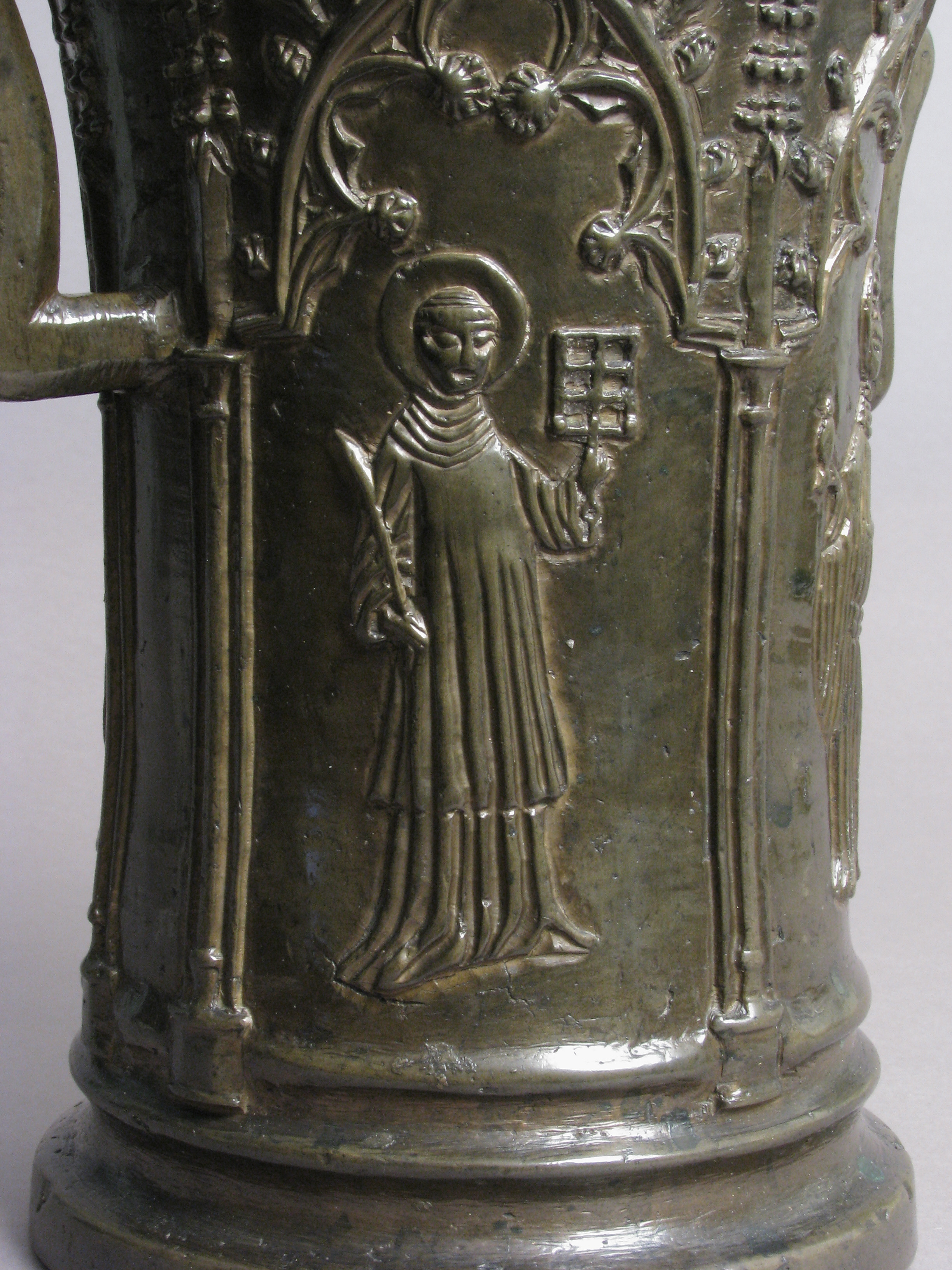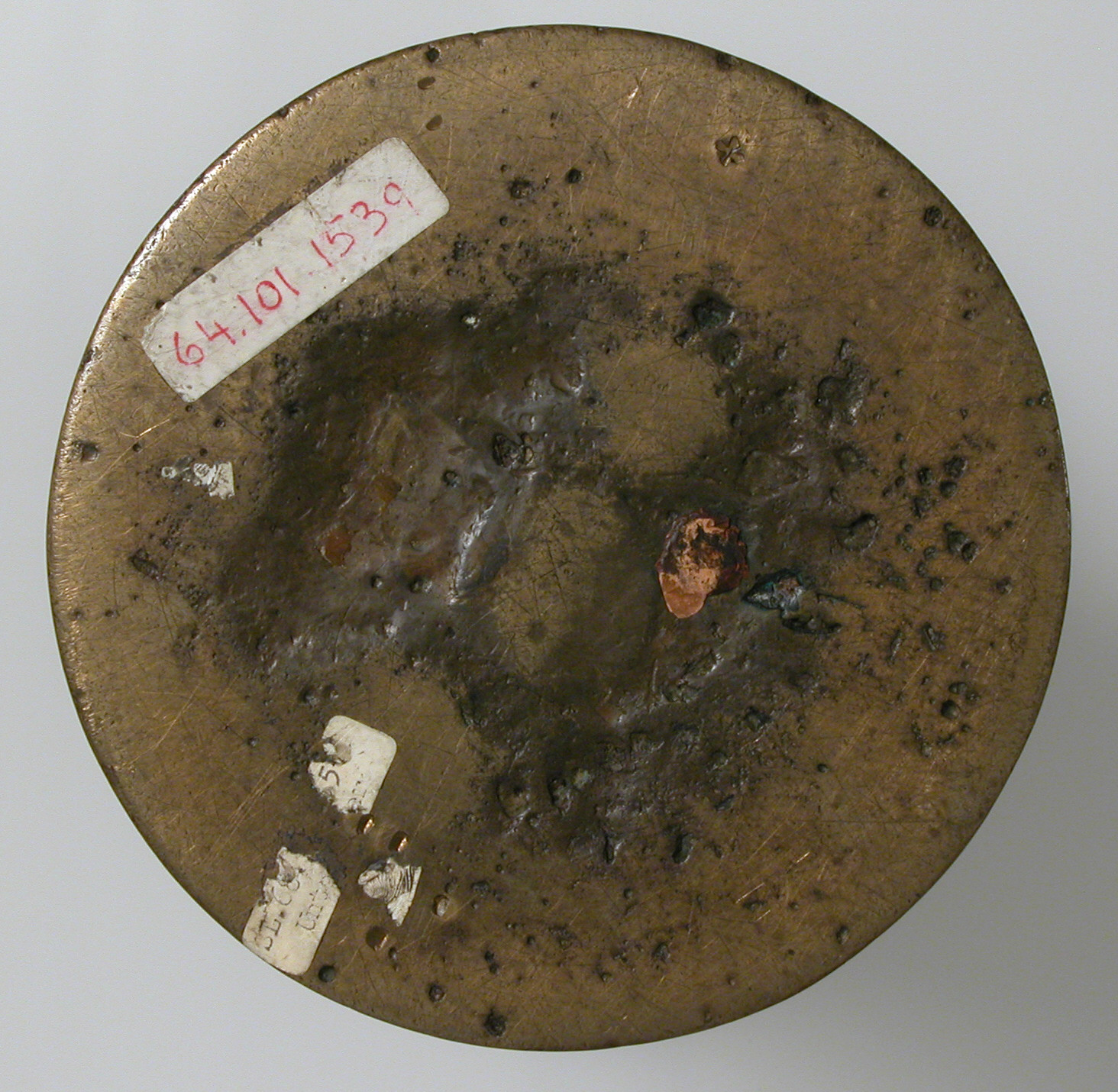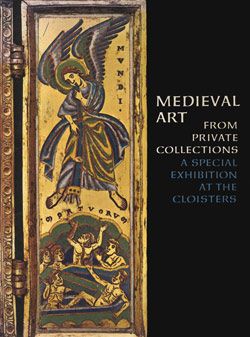Mortar
Medieval healing compounds commonly included herbs and spices, many of which could be grown and prepared at home. Toward the later Middle Ages, patients increasingly looked to apothecaries, who mixed medicines in their shops from an array of ingredients stored in glazed ceramic jars. These components sometimes required processing before mixing. For example, apothecaries relied on mortars and pestles to grind hard substances like nuts and seeds into powders that would dissolve in suspension. Manuals and recipe books were integral to medicinal concoction and dosage. The Latin inscription around the lid of the book box in this display translates to "live by the virtue of medicine," suggesting it once carried a small medical volume to be used on housecalls.
Due to rights restrictions, this image cannot be enlarged, viewed at full screen, or downloaded.
This artwork is meant to be viewed from right to left. Scroll left to view more.


